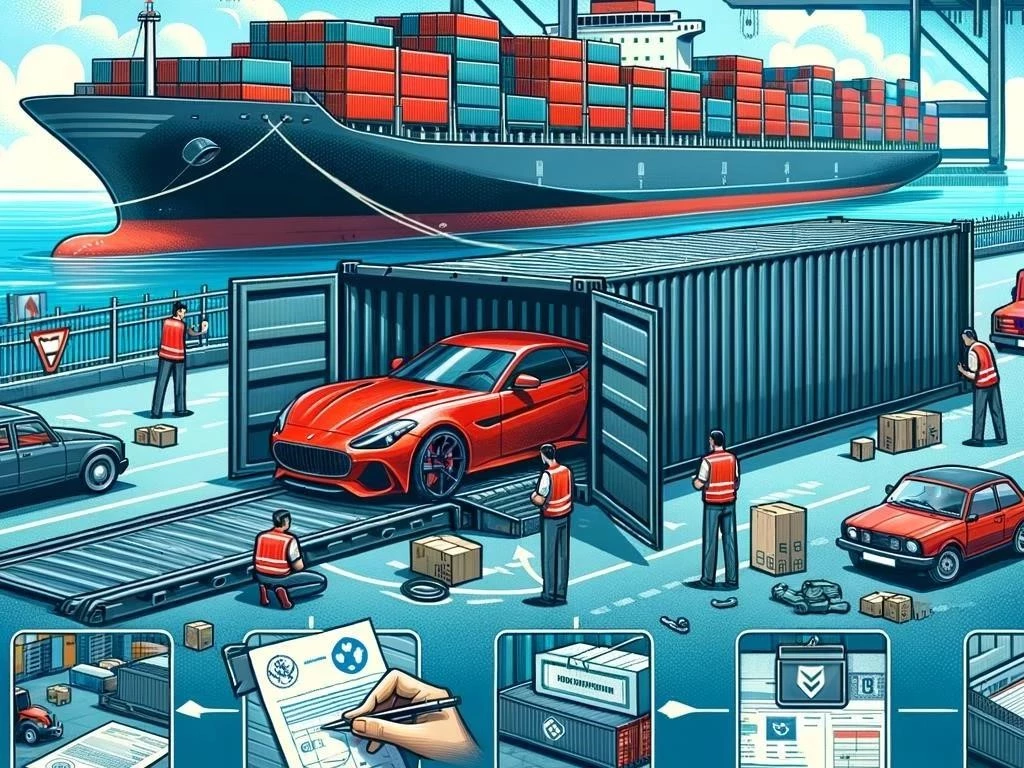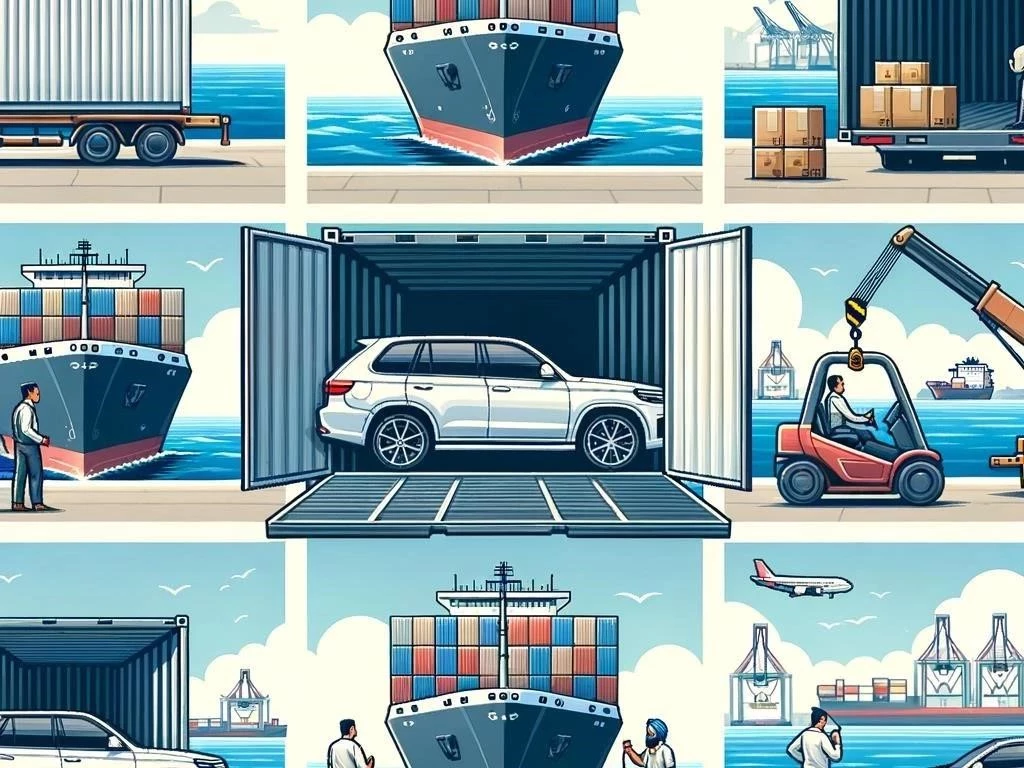How to Ship a Car Internationally
Shipping a car internationally involves understanding procedures, selecting transport methods, navigating regulations, and obtaining quotes for insurance, costs, and logistics management throughout the journey.
Understanding International Car Shipping
International car shipping involves transporting vehicles across borders, requiring knowledge of various logistics and regulations. It’s essential to comprehend the different methods available, such as roll-on/roll-off and container shipping. Each method has unique benefits, impacting shipping costs and transit time. Additionally, understanding customs regulations is crucial, as they govern import/export procedures for vehicles. Shipping companies play a vital role in facilitating the process, ensuring compliance with international regulations, and providing necessary shipping documents for a smooth transition from pickup to delivery.
Choosing the Right Vehicle Transport Method
Selecting the appropriate vehicle transport method is crucial for effective international car shipping. Two primary options are roll-on/roll-off shipping and container shipping. Roll-on/roll-off shipping allows vehicles to be driven onto the ship, minimizing handling and thus reducing damage risk. In contrast, container shipping offers added protection, as vehicles are secured within a container, ideal for high-value cars. Consider factors such as shipping costs, transit time, and destination port requirements when making your decision, ensuring it aligns with your specific needs and preferences.
2.1 Roll-on/Roll-off Shipping
Roll-on/roll-off (RoRo) shipping is a popular method for international car transport. This technique involves driving vehicles directly onto the vessel, which simplifies loading and unloading processes. RoRo is often more cost-effective compared to container shipping, making it an attractive option for budget-conscious individuals. However, it’s essential to ensure that your vehicle is in good working condition, as it must be driven on and off the ship. Additionally, vehicles are exposed to the elements during transit, so proper preparations are essential for protection.

2.2 Container Shipping
Container shipping is a secure method for international car transport, providing excellent protection during transit. Vehicles are loaded into shipping containers, which safeguard them from environmental elements and potential damage. This method is ideal for high-value or classic cars, ensuring they remain secure throughout the journey. While container shipping typically incurs higher shipping costs than roll-on/roll-off options, the added security may justify the expense for many customers. It’s essential to choose a reputable shipping company to handle container loading and unloading effectively.
Getting Car Shipping Quotes
Obtaining car shipping quotes is a critical step in the international car shipping process. To receive accurate quotes, provide shipping companies with essential information such as vehicle details, pickup and delivery locations, and preferred transport methods. Compare multiple quotes to find the best rates, considering factors like shipping costs, insurance options, and transit times. Additionally, inquire about any hidden fees, such as port fees and handling charges, to ensure comprehensive understanding of total shipping costs before making a final decision.
Preparing for Auto Shipping Services
Preparing for auto shipping services involves several essential steps to ensure a smooth process. First, clean your vehicle thoroughly to facilitate inspection and document its condition. Remove personal belongings, as shipping companies typically do not allow them. Next, gather required shipping documents, including registration and title. Ensure your vehicle has a full tank of gas for loading, but keep it under a quarter tank for safety. Lastly, consider obtaining car shipping insurance for added protection during transit, safeguarding against unforeseen damages.
4.1 Required Shipping Documents
When preparing for international car shipping, several required shipping documents must be gathered to ensure compliance with customs regulations. These typically include the vehicle title, registration, and a bill of sale, proving ownership; Additionally, you may need a completed customs declaration form to facilitate customs clearance. Ensure that you have the shipping contract with your chosen company, which outlines terms and conditions. Always verify specific documentation requirements with your shipping company, as they may vary based on destination port and local regulations;
4.2 Car Shipping Insurance
Car shipping insurance is a crucial aspect of international vehicle transport, providing peace of mind during transit. This insurance covers potential damages or losses that may occur while your vehicle is being shipped. When selecting a shipping company, inquire about their insurance policies, ensuring they offer adequate coverage for your vehicle’s value. Additionally, consider purchasing supplemental insurance for extra protection, especially for high-value or classic cars. Always review the policy details, including deductibles and coverage limits, to ensure comprehensive protection during shipping.
Navigating Customs Regulations
Navigating customs regulations is essential for successful international car shipping. Each country has specific requirements that must be fulfilled to import or export vehicles legally. Familiarize yourself with the destination country’s import/export procedures, including necessary documentation, taxes, and duties. Additionally, ensure compliance with international regulations to avoid delays or penalties. Engaging a freight forwarding service can simplify this process, as they possess expertise in customs clearance. Always stay informed about current regulations to facilitate a smooth shipping experience for your vehicle.
5.1 Import/Export Procedures
Understanding import/export procedures is vital for successful international car shipping. Each country has unique regulations governing vehicle imports, including required documentation, taxes, and compliance standards. Begin by researching the destination country’s specific requirements, which may involve obtaining an import permit or adhering to environmental regulations. Prepare necessary documents, such as the bill of sale, title, and customs declaration forms. Engaging a knowledgeable freight forwarding service can streamline this process, ensuring all procedures are followed accurately to avoid potential delays or complications during shipment.
5.2 Customs Clearance
Customs clearance is a critical step in the international car shipping process, ensuring that vehicles are legally permitted to enter or exit a country. To facilitate customs clearance, provide all required documentation, including the vehicle title, registration, and customs declaration forms. Be prepared to pay any applicable import duties and taxes, as these vary by country. It’s advisable to work with a freight forwarding company experienced in customs regulations, as they can help navigate complexities and ensure compliance, minimizing delays during the shipping process.
Understanding Shipping Costs
Understanding shipping costs is essential for budgeting your international car shipping. Various factors influence expenses, including the chosen transport method, vehicle size, and destination port. Costs may comprise base shipping fees, insurance, port fees, and handling charges. Additionally, consider customs duties and taxes, which can significantly impact the total expense. Obtain detailed car shipping quotes from multiple shipping companies to compare services and rates. This thorough approach helps you identify the best option that meets your financial and logistical requirements for vehicle transport.
6.1 Vehicle Shipping Rates
Vehicle shipping rates can vary significantly based on several factors, including the shipping method, distance, and vehicle type. Roll-on/roll-off services generally offer lower rates compared to container shipping due to reduced handling and space requirements. Additionally, shipping costs may fluctuate based on seasonal demand and fuel prices. To obtain accurate rates, provide shipping companies with essential details such as the vehicle’s make, model, and dimensions. Always compare multiple quotes to find the most competitive vehicle shipping rates that suit your needs.
6.2 Port Fees and Handling Charges
Port fees and handling charges are essential components of the total shipping cost when transporting a vehicle internationally. Port fees may include terminal handling fees, loading and unloading expenses, and customs inspection charges. Handling charges are incurred for services such as vehicle storage and documentation processing. These costs can vary significantly between ports and shipping companies, so it’s crucial to inquire about them when obtaining quotes. Understanding these additional expenses helps you budget more accurately for your international car shipping experience.
Planning Pickup and Delivery
Planning pickup and delivery is a crucial aspect of the international car shipping process. Coordinate with your shipping company to schedule an appropriate pickup time, ensuring that your vehicle is ready and accessible. Discuss the pickup location, whether at your home or a designated terminal. For delivery, confirm the destination port and any specific requirements for receiving your vehicle. Be prepared to provide necessary documentation upon delivery, and verify that your vehicle is in good condition before accepting it to ensure a smooth experience.
7.1 Port of Departure
The port of departure is a critical factor in the international car shipping process, as it determines the logistics and timeline for your vehicle’s transport. Choose a reputable shipping company familiar with the selected port, ensuring they understand local regulations and procedures. Verify the port’s facilities, including loading capabilities and security measures, to ensure your vehicle’s safety. Additionally, confirm the shipping schedule and expected transit times from the port of departure to the destination port, allowing for better planning and coordination throughout the process.
7.2 Destination Port
The destination port plays a vital role in the international car shipping process, as it impacts customs clearance and delivery arrangements. Research the destination port’s specific requirements, including customs regulations, taxes, and duties applicable to your vehicle. Be aware of the port’s facilities, which affect the unloading process and overall efficiency. Coordinate with your shipping company to ensure they are familiar with the destination port’s procedures, facilitating smooth vehicle transit and prompt pickup upon arrival, ultimately enhancing your overall shipping experience.
Freight Forwarding and International Transportation
Freight forwarding is an essential aspect of international car shipping, simplifying the logistics involved in transporting vehicles across borders. Freight forwarders coordinate the entire shipping process, handling documentation, customs clearance, and communication with shipping companies. They ensure that all regulations are met, streamlining international transportation. Utilizing a freight forwarder can save time and reduce stress, allowing you to focus on other aspects of your move or purchase. Their expertise helps navigate complexities and ensures your vehicle arrives safely and on schedule at its destination.
Estimating Transit Time
Estimating transit time is crucial for planning your international car shipping effectively. Several factors influence transit duration, including the chosen shipping method, distance between the port of departure and destination port, and any potential delays caused by customs clearance. Roll-on/roll-off shipping typically offers faster transit times compared to container shipping due to reduced loading and unloading times. Additionally, seasonal variations and shipping company schedules may affect overall timing. Always consult your shipping provider for estimated transit times to manage expectations and coordinate logistics accordingly.








